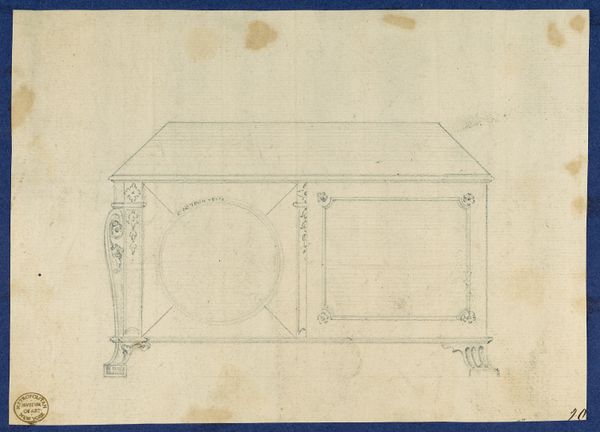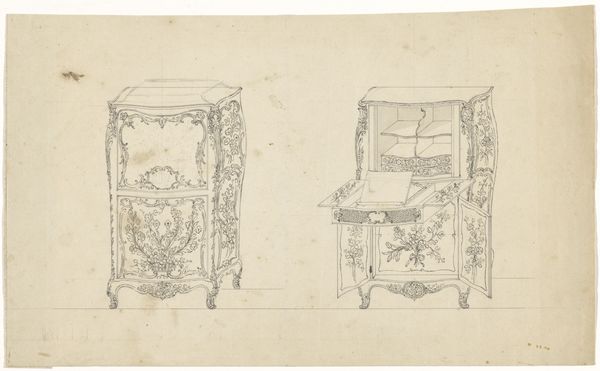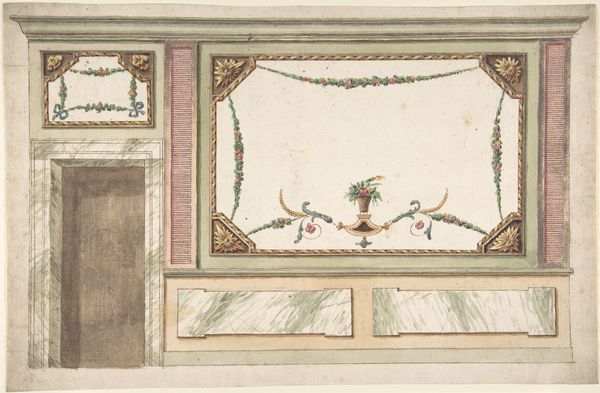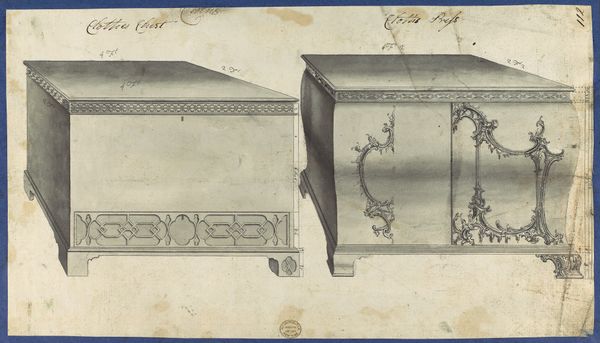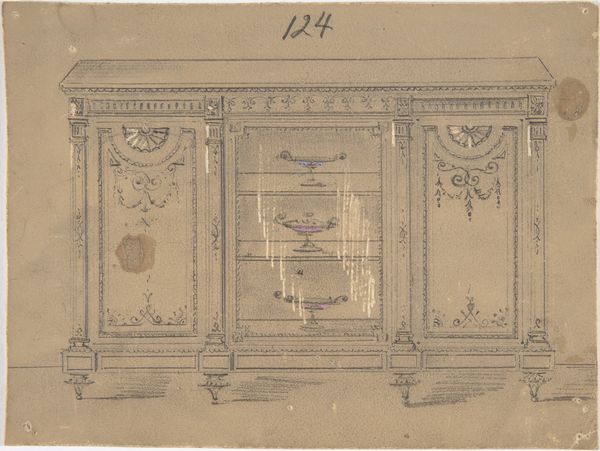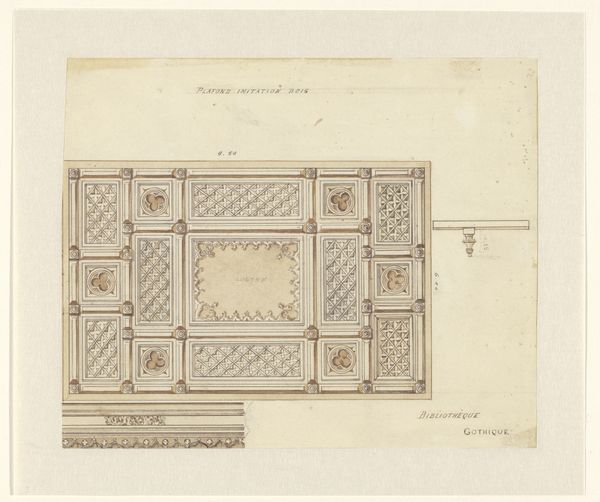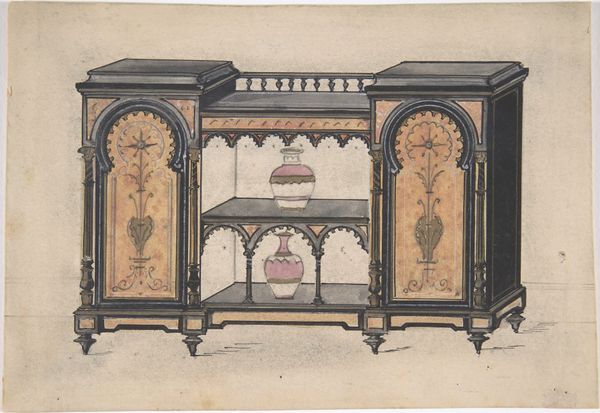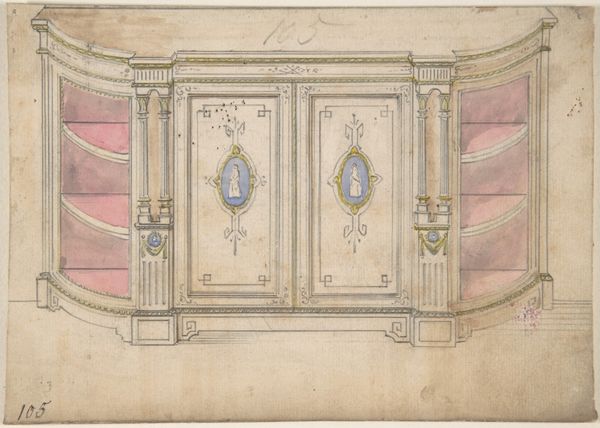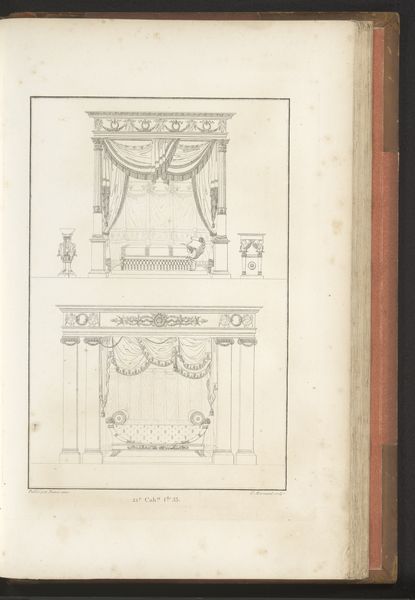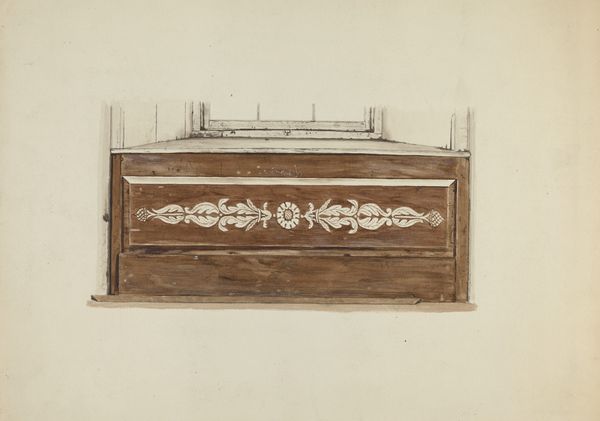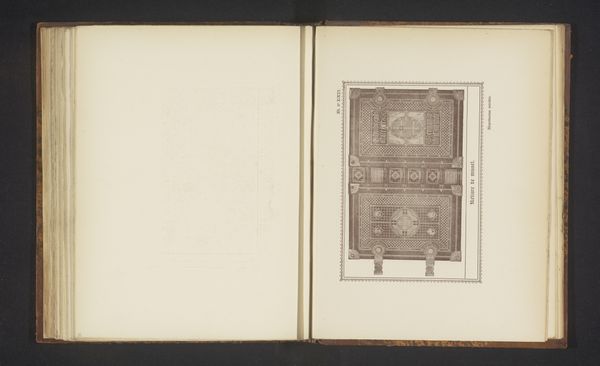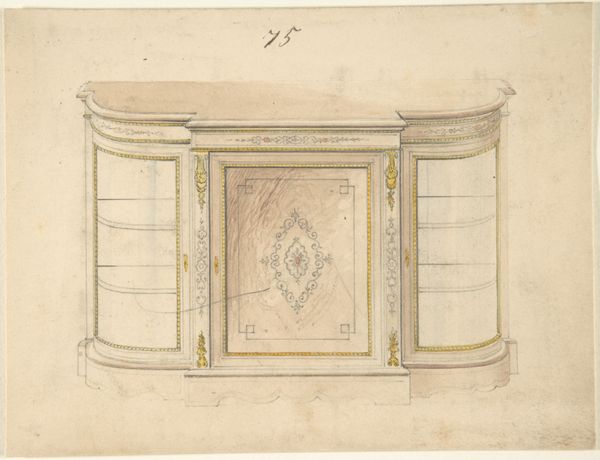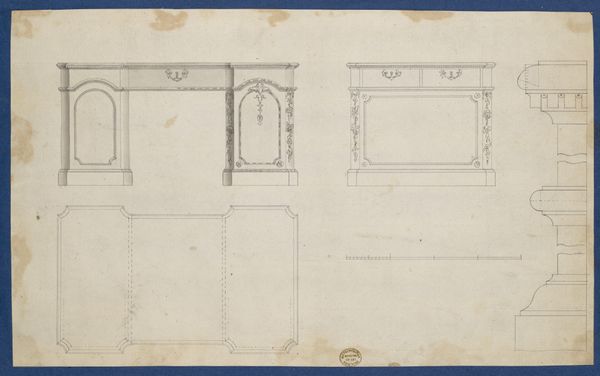
Dimensions: height 224 mm, width 271 mm
Copyright: Rijks Museum: Open Domain
Editor: Here we have "Commode," a drawing from around 1770-1775, created by J.L.Th. Baijer, using pencil, ink, and etching on paper. It's interesting, a peek into design of the time. How do you interpret this work? Curator: This drawing invites us to consider the commode not just as a functional object, but as a reflection of 18th-century societal values. The Baroque style, with its emphasis on ornamentation and grandeur, speaks to the opulence and performativity of the aristocracy. Think about the power dynamics at play: Who were these pieces made for, and what did their possession signify? Editor: So, it's more than just furniture. Curator: Exactly! It reflects a hierarchy. Consider also, the artist was planning something that others would build. What does this say about labour, class, and access to beauty? These decorative arts were instruments of power and the performance of gender; displaying wealth but also restricting those outside of this powerful echelon. Who benefits, and who is excluded? Editor: I see what you mean, the commode becomes part of a larger discussion. The object itself represents inequalities. Curator: Precisely. Looking at the materials, the drawing itself hints at the environmental costs linked to luxury furniture. What materials would have been needed, and from where? Are there ecological implications in the sourcing, crafting, and ultimately discarding these goods? Editor: That's a completely different way of viewing it, very insightful! Curator: Hopefully, you see now that even seemingly simple objects open the doors for broader discussion of economics, environment, power and identity. Editor: Absolutely. I’ll definitely be more conscious of these elements going forward.
Comments
No comments
Be the first to comment and join the conversation on the ultimate creative platform.
